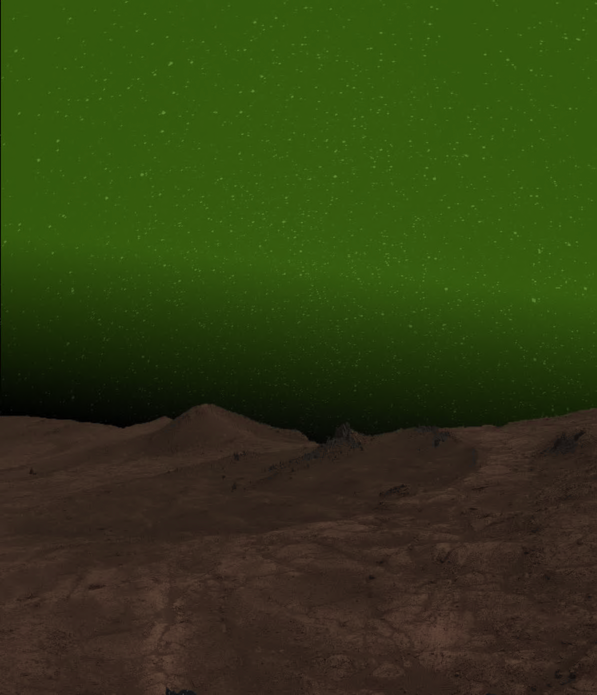North/south asymmetries of the Mars NO ultraviolet and O2 visible nightglow using TGO/NOMAD/UVIS observations
- 1LPAP, STAR Institute, Université de Liège, Liège, Belgium.
- 2Instituto de Astrofìsica de Andalucía - CSIC, Granada, Spain
- 3Royal Belgian Institute for Space Aeronomy, Brussels, Belgium
The discovery of the first visible nightglow is a promising tool to deepen our knowledge of the dynamics of the Martian upper atmosphere (Figure 1). Gérard et al. (2023) discovered the O2 Herzberg II system between 400 and 650 nm in the nightglow, using TGO/NOMAD/UVIS limb observations. Signatures of the O2 visible nightglow have been detected in the polar winter regions (Figure 2), similarly to the extensively observed NO ultraviolet nightglow (Schneider et al., 2020). These seasonal brightenings at high latitudes confirm the global transport of O and N atoms ascending from the sunlit summer polar regions and carried downward by vertical winds and diffusion to the 40-60 km region of the dark winter atmosphere.

Figure 1: Artist view of the O2 nightglow over the red planet (ESA press release).
Figure 2: Distribution of detections of the O2 Herzberg II nightglow (Gérard et al., 2023).
A NOMAD/UVIS campaign dedicated to the observation of the southern pole during the winter season occurred between May and October 2023. Spectra acquired both in the inertial and limb tracking modes have been analyzed to estimate the intensity of the O2 emission and its latitudinal variability. Limb profiles have also been generated (Soret et al., in prep). Moreover, NOMAD/UVIS is the first instrument able to simultaneously monitor the UV and visible domains in the Martian atmosphere, so that the NO and O2 emissions can be directly compared. Soret et al. (in prep) showed that the NO emission layer generally occurs ~10 km higher than the O2 layer. Comparison with Mars PCM (v6) simulations shows that the O2 nightglow is generally well reproduced, but the simulated NO nightglow occurs higher than observed.
Previous studies however pointed out that an asymmetry is observed between the southern and the northern winter polar regions, regarding the brightness of the NO nightglow (Schneider et al., 2020) and the O2 infrared nightside emission at 1.27 μm (Bertaux et al., 2012). Therefore, a NOMAD/UVIS dedicated campaign has been planned to monitor the northern winter pole region. The campaign is currently ongoing. The present study aims to confirm the NO asymmetry observed by MAVEN and to verify whether the same conclusions apply to the Herzberg II visible nightglow. We quantify the possible differences in terms of intensity and altitude of the emitting layer.
This comparative study provides valuable constraints for improving 3-D models that simulate global circulation and dynamic processes. In particular, it will help solving the current discrepancy between the predicted and modeled altitude distribution of the NO nightglow that is currently overestimated.
References:
Bertaux et al. (2012). First detection of O2 1.27 µm nightglow emission at Mars with OMEGA/MEX and comparison with general circulation model predictions, JGR, 117, E00J04, doi:10.1029/2011JE003890.
Gérard et al. (2023). Observation of the Mars O2 visible nightglow by the NOMAD spectrometer onboard the Trace Gas Orbiter. Nature Astronomy, https://doi.org/10.1038/s41550-023-02104-8
Schneider et al. (2020). Imaging of Martian circulation patterns and atmospheric tides through MAVEN/IUVS nightglow observations. JGR Space Physics 125(8), e2019JA027318.
Soret et al. (in prep). Ultraviolet NO and visible O2 nightglow in the Mars southern winter polar region: statistical study and model comparison.
How to cite: Soret, L., Gérard, J.-C., Gonzalez-Galindo, F., Thomas, I., Ristic, B., Willame, Y., Vandaele, A. C., and Hubert, B.: North/south asymmetries of the Mars NO ultraviolet and O2 visible nightglow using TGO/NOMAD/UVIS observations, Europlanet Science Congress 2024, Berlin, Germany, 8–13 Sep 2024, EPSC2024-795, https://doi.org/10.5194/epsc2024-795, 2024.